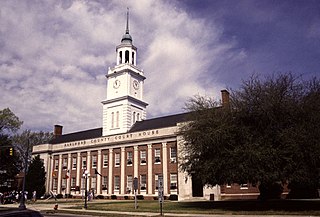
Marlboro County is a county located in the Pee Dee region on the northern border of the U.S. state of South Carolina. As of the 2020 census, its population was 26,667. Its county seat is Bennettsville. The Great Pee Dee River runs through it.

Albemarle is a city in and the county seat of Stanly County, North Carolina, United States. The population was 16,432 in the 2020 census.
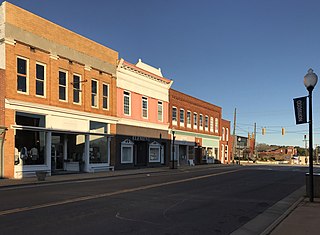
Norwood is a town in Stanly County, North Carolina, United States. The population was 2,379 at the 2010 census.

Cheraw is a town on the Pee Dee River in Chesterfield County, South Carolina, United States. The population was 5,040 at the 2020 census. The greater Cheraw area in the zip code 29520 has a population of 13,689 according to the 2019 ACS data. It has been nicknamed "The Prettiest Town in Dixie". More than half the population is African American.

Society Hill is a town in Darlington County, South Carolina, United States alongside the Pee Dee River. It is the oldest community in Darlington County and one of the first towns founded in South Carolina. The town was once the intellectual center of the Pee Dee region. However, the town's fortunes declined in the 19th century after rivers became less important as means of transportation. It is part of the Florence Metropolitan Statistical Area.
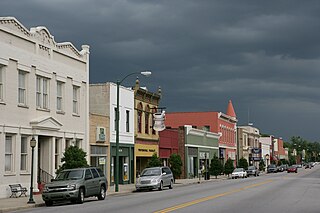
Marion is a city in and the county seat of Marion County, South Carolina, United States. It is named for Francis Marion, a brigadier general from South Carolina in the American Revolutionary War. The population was 6,939 at the 2010 census.

Bennettsville is a city located in the U.S. state of South Carolina on the Great Pee Dee River. As the county seat of Marlboro County, Bennettsville is noted for its historic homes and buildings from the 19th and early 20th centuries—including the Bennettsville Historic District which is listed on the National Register of Historic Places.

The Pee Dee River, also known as the Great Pee Dee River, is a river in the Carolinas of the United States. It originates in the Appalachian Mountains in North Carolina, where its upper course, above the mouth of the Uwharrie River, is known as the Yadkin River. The river empties into Winyah Bay, and then into the Atlantic Ocean near Georgetown.

The Lumber River, sometimes referred to as the Lumbee River, is a 133-mile-long (214 km) river in south-central North Carolina in the flat Coastal Plain. European settlers first called the river Drowning Creek, which is still used as the name of its headwater. The waterway known as the Lumber River extends downstream from the Scotland County-Hoke County border to the North Carolina-South Carolina border. Soon after crossing into South Carolina, the Lumber River flows into the Little Pee Dee River, which flows into the Pee Dee River, or Great Pee Dee River. Finally, the combined waters flow into Winyah Bay and the Atlantic Ocean.

Galivants Ferry is an unincorporated community in Horry County, South Carolina, United States. It lies on the Little Pee Dee River west of Aynor on U.S. Route 501.

Town Creek Indian Mound is a prehistoric Native American archaeological site located near present-day Mount Gilead, Montgomery County, North Carolina, in the United States. The site, whose main features are a platform mound with a surrounding village and wooden defensive palisade, was built by the Pee Dee, a South Appalachian Mississippian culture people that developed in the region as early as 980 CE. They thrived in the Pee Dee River region of North and South Carolina during the Pre-Columbian era. The Town Creek site was an important ceremonial site occupied from about 1150—1400 CE. It was abandoned for unknown reasons. It is the only ceremonial mound and village center of the Pee Dee located within North Carolina.

The Yadkin–Pee Dee River Basin is a large river basin in the eastern United States, covering around 7,221 square miles, making it the second largest in the state of North Carolina. Its headwaters rise near Blowing Rock, North Carolina, and the basin drains to the Atlantic Ocean in Winyah Bay, east of Georgetown, South Carolina.

Galivants Ferry Historic District is a national historic district located at Galivants Ferry in Horry County, South Carolina. It encompasses 28 contributing buildings that reflect the agricultural heritage of Galivants Ferry and of the larger Pee Dee region. Included are tenant farmer houses, storage barns, tobacco packhouses, curing barns, and sheds. They include the home of the Holliday family and a church that sits at the edge of a long stretch of tobacco fields on Pee Dee Road. Also included is a filling station along U.S. Route 501. The two-story white brick John Monroe Johnson Holliday House was completed in 1950 and based on a house George Holliday built in the 1920s which burned in 1943. It is described as "owing much to the Colonial Revival and Greek Revival styles."

Prince Frederick's Chapel Ruins is a historic site in Plantersville, South Carolina.
Welsh Neck–Long Bluff–Society Hill Historic District is a national historic district located near Bennettsville, Marlboro County, South Carolina. The district encompasses 250 contributing buildings in the communities of Welsh Neck, Long Bluff, and Society Hill. The Welsh Neck community was an early religious center for the Pee Dee region, and Long Bluff served as a judicial center. The courthouse at Long Bluff, with its jail, tavern, and supporting buildings, was a center of activity for the Upper Pee Dee region during the Revolution. Few small communities have contributed more to the public in the way of culture, education and leadership than has Society Hill. It has numbered among its population outstanding leaders in religion and education, jurists, statesmen, soldiers, authors, and agriculturists. The Society Hill Library Society was formed in 1822. This group grew out of the St. David's Society, founded 1777 in Cheraw, which had a widespread influence and was a main factor in making Society Hill a center of intelligent leadership in the Pee Dee for a century and a half.
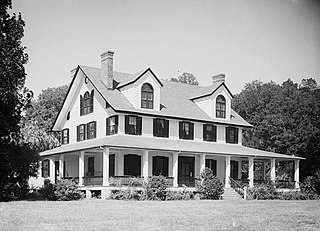
Pee Dee River Rice Planters Historic District is a set of historic rice plantation properties and national historic district located near Georgetown, Georgetown County, South Carolina.
The Adamson Mounds Site (38KE11) is an archaeological site located near Camden, Kershaw County, South Carolina. It is a prehistoric Native American village site containing one large platform mound, a smaller mound, possibly a third still smaller mound, and a burial area. It served as a regional ceremonial center. This site represents a widespread, late prehistoric Mississippian culture known by the names of Lamar, Irene, or Pee Dee and dates probably between AD 1400 and AD 1700.
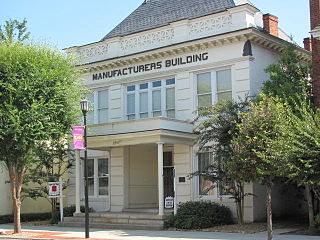
Manufacturers Building is a historic commercial building located at Rockingham, Richmond County, North Carolina. It was built about 1904, and is a two-story, cream-colored brick commercial building. Its brickwork is in common bond. It has a high hipped and slate covered roof. The building served as the administrative offices for five of the most important textile mills in Richmond County—Pee Dee Manufacturing Company, Steele's Mills, Roberdel Mills, Midway Mills, and Hannah Pickett Mills.

Pee Dee Avenue Historic District is a national historic district located at Albemarle, Stanly County, North Carolina. The district encompasses 87 contributing buildings and 1 contributing site in a predominantly residential section of Albemarle. They were built between about 1891 and 1947 and include notable examples of Queen Anne, Colonial Revival, and Bungalow / American Craftsman style residential architecture. Notable buildings include the Brown-Parker House, Crowell House, Lambert-Hughes-Ferrell House, W. Berly Beaver House (1929-1936), David Augustus Holbrook House (1929-1936), Langley-Holbrook House, William Thomas Huckabee, Jr., House (1947), Robert Lee Smith Family House, and Wade F. Denning House.
The Gordon Payne Site, designated by the Smithsonian trinomial 31MR15, is a prehistoric archaeological site in northern Moore County, North Carolina. Located on a terrace above the Deep River, it is a habitation site whose artifacts have yielded dates of 1060-1100 CE. Large numbers of cultural remains were excavated in the 1970s and 1980s, that are consistent with the Pee Dee culture, whose center is believed to be the Town Creek Indian Mound, about 30 miles (48 km) away in Montgomery County.


















